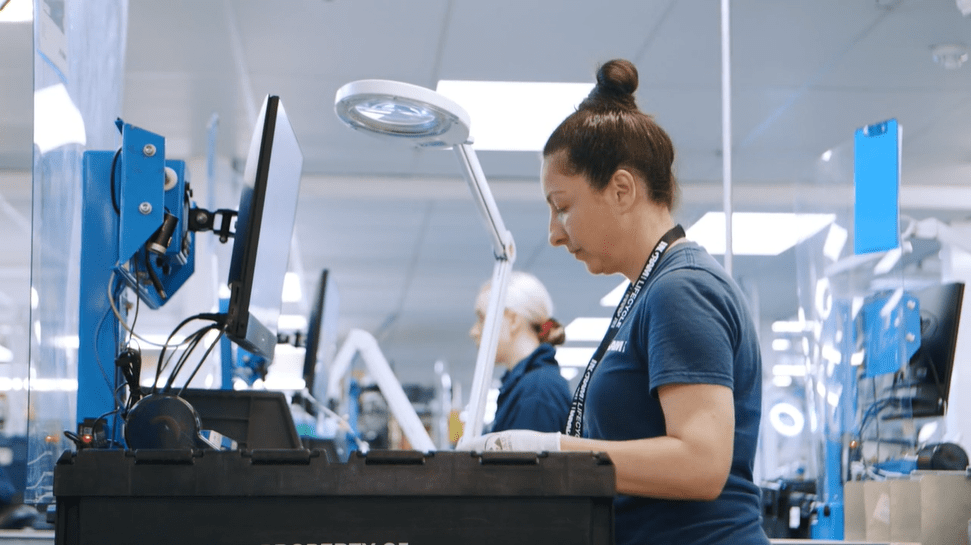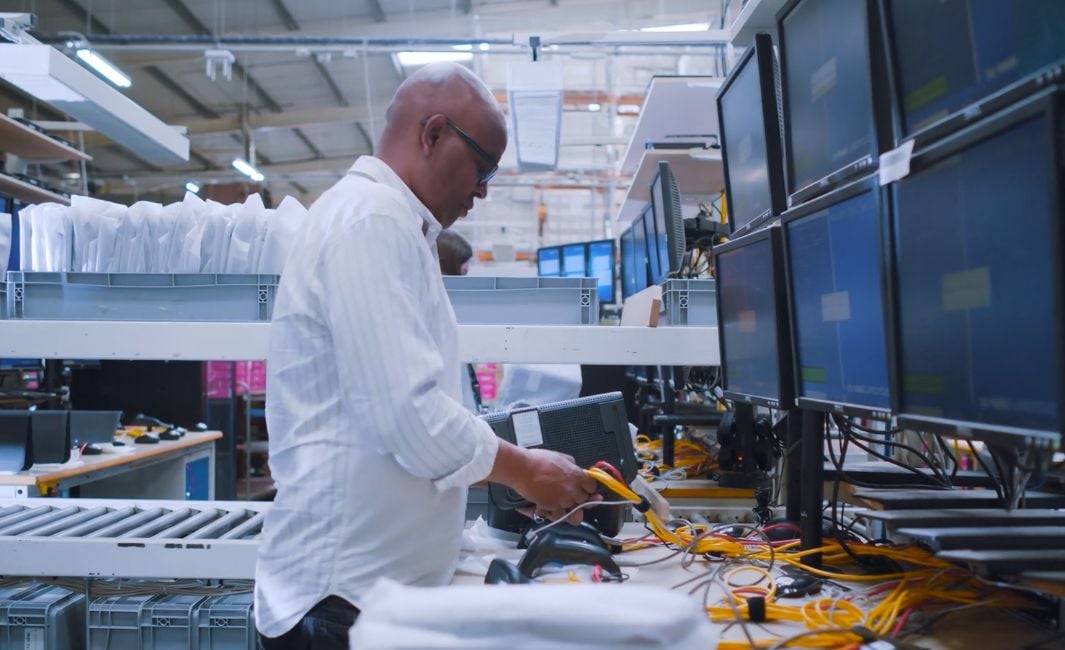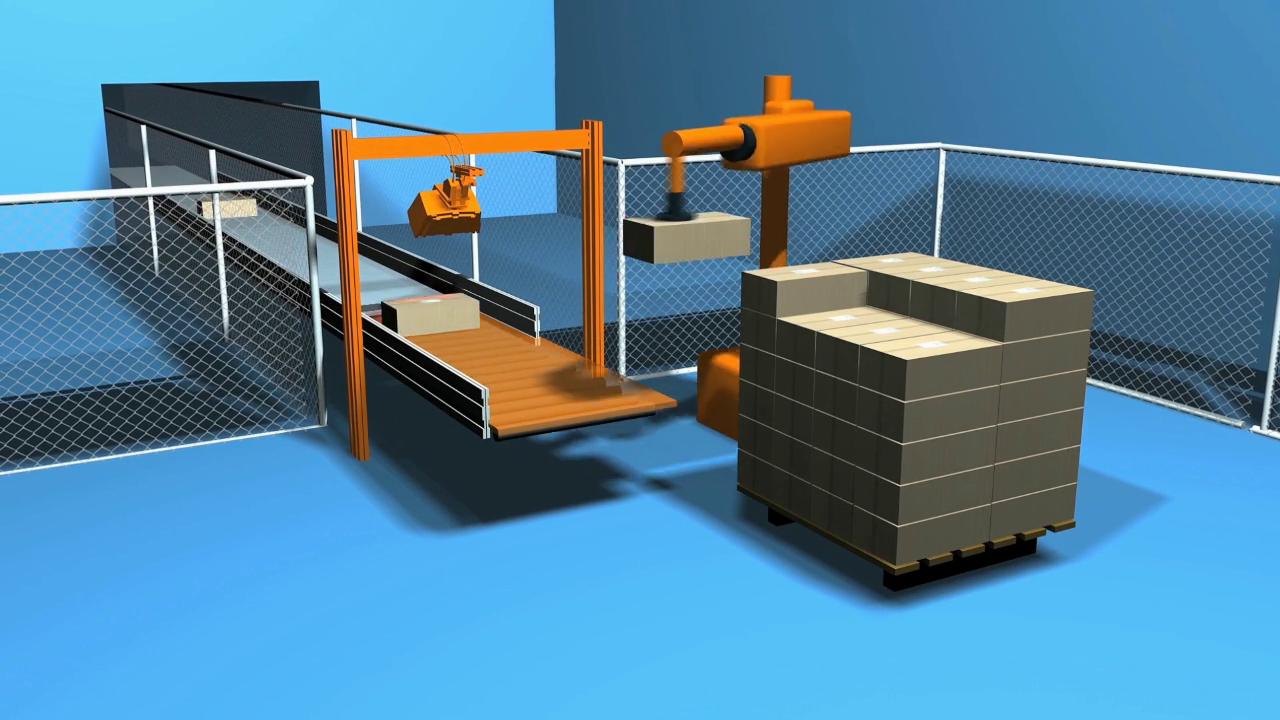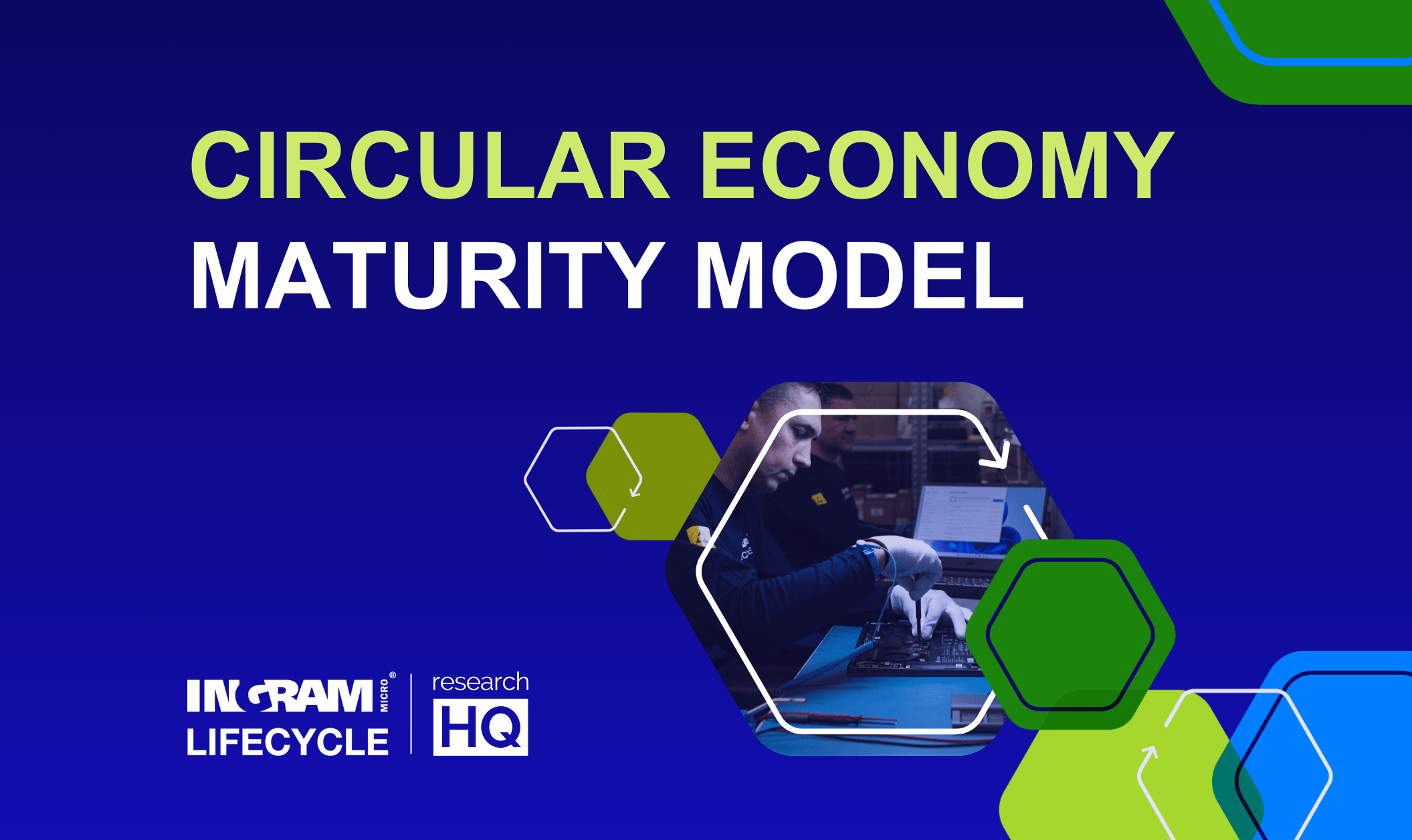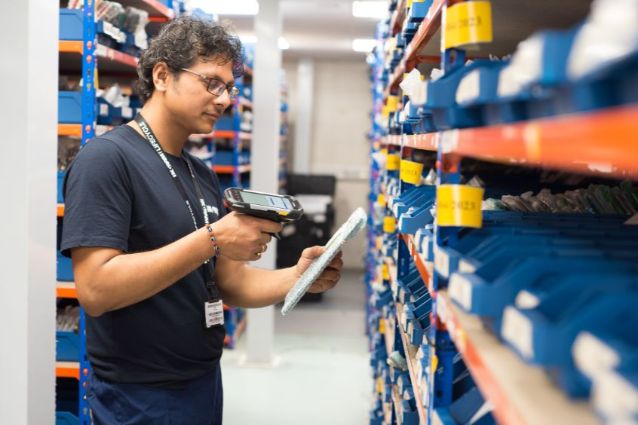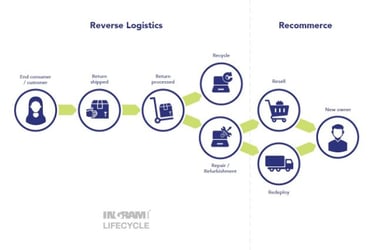Are you struggling with product returns? Overwhelmed by volumes? Or perhaps you’re looking to make cost savings, improve efficiencies, and make waste reductions?
Ingram Micro Lifecycle has supported customers in multiple industries with reverse logistics services for over a decade. We work with global companies to streamline processes, provide efficient off-site returns management, and recoup the maximum value of returned goods via secondary market sales.
In our latest article below, we uncover and explain some key steps you can take to improve your reverse logistics process to maximize the benefits.
What is reverse logistics?
Reverse logistics is the backward movement of products within the customer supply chain to an originating point. For example, when a customer wants to return a product, this triggers the reverse logistics process, in returning the product back to the point of purchase.
It’s the opposite of forward logistics, which moves products along the supply chain, towards the end user.
It’s predicted that by 2026, the global value of e-commerce retail sales will reach $8.1 trillion. That’s a significant growth of 56% from 2021 and will have a huge impact on reverse logistics.
Check out the full definition, types of reverse logistics, and the benefits.
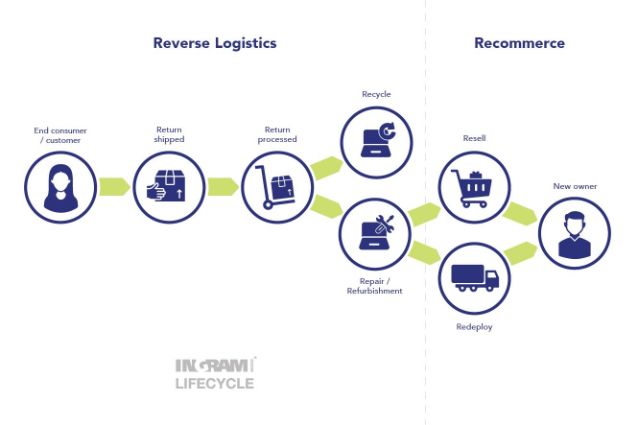
7 steps to improve reverse logistics processes
The efficiency of your reverse logistics process directly impacts costs (and therefore return on investment plus profits), so optimizing this by improving processing speeds and decision-making will have a positive impact on your bottom line.
Putting your customer at the center of the process ensures that their journey is the focus and their experience will be a positive one.
1. Automate
Invest in enhancing your processes via the introduction of automation and robotics. These reduce or limit the potential impact of human biases within your workflows.
Setting the process to meet a standardized list of criteria ensures consistency. Keeping everything consistent also reduces wasted time and improves speed.
2. Centralize returns
This enables one set of reverse logistics process guidelines that all products are subjected to. You’ll benefit from the uniformity and efficiency of reclaiming product value. Outsource where necessary if you’re constrained by space etc to allow for a central returns point and process.
Reverse logistics partners may have the agility and resources (such as manpower) you need to innovate.
3. Review transportation
Regularly assess your logistics and any third-party transport providers to see where weak points could be improved. Look for areas where efficiencies could be made to save time and money.
4. Use data and monitoring systems
There are many different strands of data you can collect for your reverse logistics process to identify where efficiencies can be made. However, just because you can collect data on something, doesn’t mean it’ll be useful. Be wary of investing time and effort into data that won’t provide any benefit. Only collect data that you can use.
If you’ve got data that’s not informing any improvements, do you need to be collecting it? That in itself can be a way of stripping out inessential activities.
Look for trends in your data analysis that point to issues within the product development cycle or supply chain so those earlier on in the chain can be notified, preventing returns and reducing volumes.
5. Collaborate and be agile
Look for external resources and third-party suppliers that may have a better infrastructure than what you can provide yourself. You don’t want to lose too much focus on your core business activities, and sometimes diversifying to satisfy business needs can detract.
Check what areas you need additional support in and when. It may be that you don’t have a year-round demand for third-party support and therefore don’t need to over-commit on an extra outgoing.
6. Evaluate the terms of sale
Regularly review your terms and conditions, and returns policy to make sure you’re not exposed to any loopholes or that you’re not being too lenient. Check what your competitors are offering. Avoid being vague so your customers know what to expect before they purchase and understand what their rights are.
Check your policies to see how you can better avoid the possibility of fraudulent returns.
7. Improve customer service
As a form of returns avoidance, your customer services should be geared towards educating and assisting customers with any performance issues or user-led problems. This kind of technical support helps ensure that customers are using the products in the right way.
The customer-facing team should feed reports to manufacturing highlighting any common issues in product development. Raising concerns about issues occurring near the start of the supply chain enables you to course-correct and reduce the impacts this has on the product itself.
Improving costs and efficiencies in your reverse logistics
By taking these seven different steps and focusing on different factors within your reverse logistics program, you’ll be able to see where improvements could be made. Making positive changes within these areas will boost customer satisfaction and brand performance.
Ingram Micro Lifecycle has acted as a third-party logistics provider to a number of global organizations. Our facilities provide returns management services that enable a circular economy, extending the lifecycle of products ahead of secondary market sales. These efforts boost the ESG performance of our customers and maximize potential value recovery.
Get in touch with us today to find out more about our reverse logistics services and how we can tailor our solutions to suit your needs.
Recommended reading:



